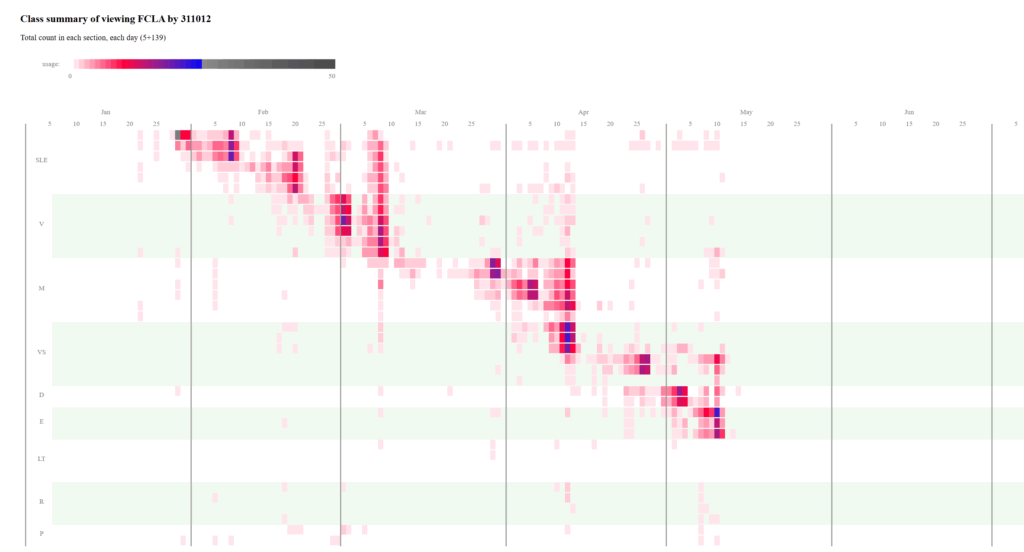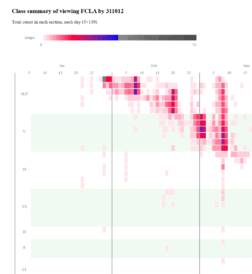By Erin Moss
Have you ever wanted a comprehensive understanding of how mathematics texts are really being utilized by college instructors and students? The NSF DUE-funded UTMOST project (Undergraduate Teaching of Mathematics with Open Software and Textbooks) explored just that, while further developing open resources for use in college mathematics classrooms. Readers may recall that in 2020 DUE Point highlighted how the UTMOST project developed PreTeXt, a markup language and publishing system for open-source textbooks, and the Open Textbook Initiative that supports a community of scholars in authoring and adopting mathematics textbooks. Recently, Dr. Vilma Mesa, UTMOST PI, sat down with a member of the DUE Point team to discuss how the project has evolved into UTMOST 3.0 and how the team has used PreTeXt to investigate the use of texts in university classes.
Note: some responses have been lightly edited for length and clarity.
How did you conceptualize and design the UTMOST project?
We based UTMOST 3.0 on the initial exploratory two-year project that laid groundwork and developed instruments, protocols, and ways to study how instructors and students would use online versions of free textbooks. Our intention was to identify the feasibility of collecting data and making claims about how they were using the textbooks. PreTeXt is a markup language for authoring free open-source textbooks; among its many advantages, it facilitates detailed data collection of student and instructor interaction with the various embedded textbook elements, such as short answers, sage cells, and homework.
UTMOST 3.0 has three components: 1) further development of PreTeXt; 2) educational research on the use of PreTeXt textbooks by students and teachers; and 3) expansion of the Open Textbook Initiative. The educational research informed development of PreTeXt, such as making interactions easily trackable and responding to the student desire for highlighting capabilities. Specifically, we investigated interactions with the PreTeXt versions of Active Calculus (Boelkins), Linear Algebra (Beezer), and Abstract Algebra (Judson).
What aspects of your work do you think have compelled NSF to fund so many iterations of your project?
The project studies the use of particular textbook features. We know that how curriculum and resources are actually used by faculty and students can be critical to success or failure. There is research that shows that a teacher with good resources and good knowledge can take a really bad curriculum and work wonders with it. Yet the best tools can be misused. So it’s all in how we use things. That’s the missing piece: How do you choose a problem? How do you know this particular question will do what you want? If a student has said something wrong, what does a teacher do next? These uses are at the core of teaching and learning.
What is unique about the current iteration of UTMOST?
For this larger four-year project, we wondered whether there were usage differences between html interactive and pdf static paperbound versions of Calculus, Linear Algebra, and Abstract Algebra textbooks created with PreTeXt. This involved collecting data from student grades, students’ and teachers’ reports of use, classroom visits, interviews, focus groups, surveys of faculty and students, and heatmaps of textbook viewing. One of the most interesting components of data collected through the PreTeXt software are the interactive heat maps that provide a visual representation of teacher and student viewing of text materials over time and across content. PreTeXt also made it possible to collect student responses to reading questions. In mapping the resources that faculty and students use, we discovered different orientations towards preparing lecture notes and towards engaging with the text.

How did instructors utilize the data gathered from PreTeXt tools to enhance or adjust classroom instruction?
Instructors are often initially intimidated by the prospect of changing materials and pedagogy, as time to change is scarce and risk-taking is not incentivized. Many found it worthwhile to investigate student responses to reading questions collected in real time; a group of Linear Algebra faculty used these to modify their classroom instruction. Another faculty member had been using active learning in upper-division courses, like abstract algebra and linear algebra. He initially did not see a pathway for integrating active learning in lower-level courses, but as a project participant he had the “excuse” to try implementing active learning in Calculus. Based on midterm results, he was so excited that he fully embraced Active Calculus over the prior textbook he was using, which was more traditional.
A particularly interesting discussion among faculty participants was on what makes a “good reading question.” Initially, participants believed it to be a question that everybody answers correctly. Pondering examples from students’ responses to a small set of answers to reading questions collected in the project led them to conclude that a good reading question can be one that leads to many incorrect responses. When you take the time to discuss the not-so-perfect responses as a class, that’s when everyone learns the most!
Author’s Note:
If you would like to know more about this NSF Project (#1821509), contact the PI, Dr. Vilma Mesa, at vmesa@umich.edu

Erin Moss is a Co-Editor of DUE Point and a Professor in the Department of Mathematics at Millersville University.
